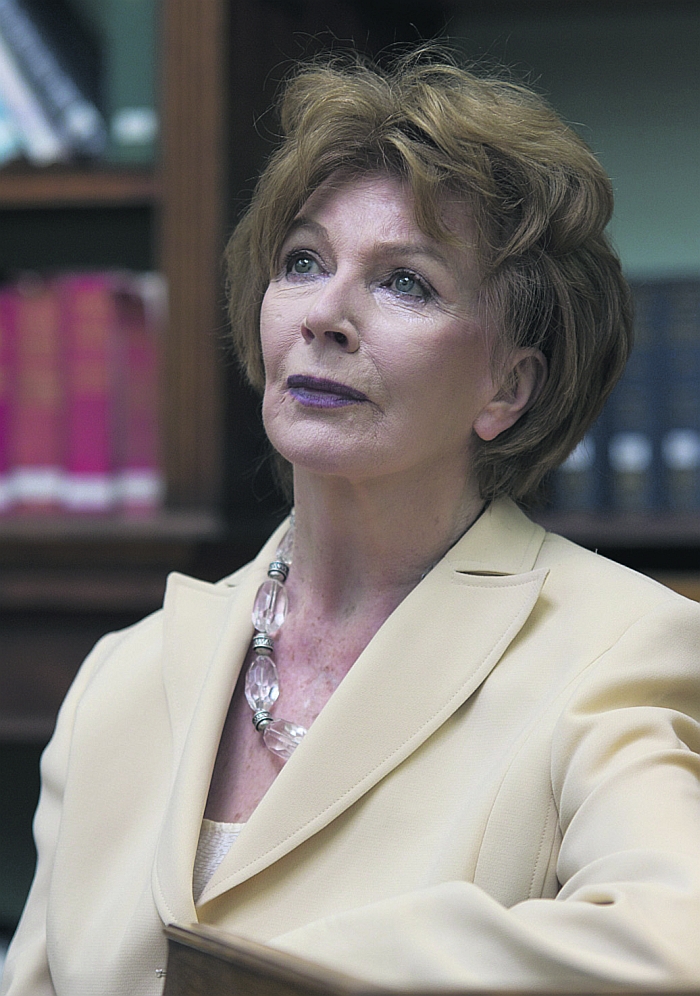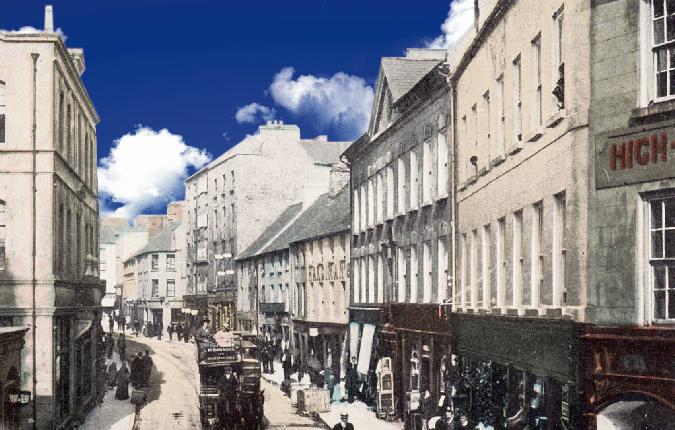Archive News
Promising programme as Cuirt offers a mix of new and familiar

Date Published: 13-Mar-2013
Two giants of Irish poetry, Seamus Heaney and Michael Longley will be the featured guests at the opening night of this year’s Cúirt Festival of Literature, which takes place at venues in Galway City and County in April.
Cúirt will be formally opened by President Michael D Higgins on Wednesday, April 24 in the Meyrick Hotel, and the official opening will be followed by the reading from Heaney and Longley in the Town Hall at 8.30pm.
It’s a promising programme this year, with other highlights including a public interview with Clare-born Edna O’Brien centred on her memoir Country Girl. That will be conducted by broadcaster and author, Vincent Woods on in the Town Hall Theatre on Thursday, April 25.
On Saturday, April 27, the Festival will host an interview with A.M Holmes, the American author of This Book Will Save Your Life and more recently May We Be Forgiven. That’s at 1pm in the Town Hall Theatre.
That evening, award-winning American poet, short-story writer and novelist Ron Rash, and Irish author Claire Keegan will take to the stage of the Town Hall for a joint reading.
Galway author Mary Costello, who previously took part in the Cúirt Over the Edge readings returns this year to take part in a reading on Sunday afternoon with novelist and short-story writer, Mike McCormack. Mary’s debut collection of short stories, The China Factory was published last year to much acclaim and received a nomination for the Guardian First Book Award. RTÉ featured it on the station’s Book on One slot last October while the BBC broadcast five of its stories in February. Mary Costello and Mike McCormack will be in an Taibhdhearc on Sunday, April 28 at 2pm.
Other novelists taking part in Cúirt include Keith Ridgeway, Lucy Caldwell and Ben Marcus, while there will also be readings from poets Paula Meehan and Sharon Olds; Leanne O’ Sullivan and Matthew Sweeney; and Priscila Uppal, Tishani Doshi and Tiffany Atkinson.
The festival will include a wide range of themed talks and discussions as well as book launches, literary outings and theatre, including Galway Community Theatre’s production of Neil La Bute’s Medea Redux, directed by Andrew Flynn.
The themed events include a crime panel discussion consisting of crime writers from Ireland, Finland and Sweden who are published by Harvill Secker. That’s on Saturday, April 27 at 6.30pm in the Town Hall.
This year’s festival will also host a new EU cultural initiative: The Crossroads of European Literature. The project sees Cúirt teaming up with literary festivals in Slovenia and Italy and will include writer residencies, a literary outing and a seminar.
And on the final day of the Festival, the action will move to the pre-Famine village of Cnoc Suain, on the Spiddal-Moycullen Road for an event to mark The Atlas of the Great Irish Famine. This ground-breaking book was published last year by Cork University Press.
Starting at 4pm on April 28, two contributors to the publication will give presentations on their work. They include co-editor William J Smyth and contributor Cathal Póirtéir, and they will be joined by Spiddal singer Áine Ní Dhroigneáin.
Cúirt 2013 will wrap up with concert in An Taibhdhearc featuring the renowned a capella traditional group The Voice Squad. That’s at 8pm on April 28.
For more, read this week’s Connacht Tribune.
Galway in Days Gone By
The way we were – Protecting archives of our past

People’s living conditions less than 100 years ago were frightening. We have come a long way. We talk about water charges today, but back then the local District Councils were erecting pumps for local communities and the lovely town of Mountbellew, according to Council minutes, had open sewers,” says Galway County Council archivist Patria McWalter.
Patria believes we “need to take pride in our history, and we should take the same pride in our historical records as we do in our built heritage”. When you see the wealth of material in her care, this belief makes sense.
She is in charge of caring for the rich collection of administrative records owned by Galway County Council and says “these records are as much part of our history as the Rock of Cashel is. They document our lives and our ancestors’ lives. And nobody can plan for the future unless you learn from the past, what worked and what didn’t”.
Archivists and librarians are often unfairly regarded as being dry, academic types, but that’s certainly not true of Patria. Her enthusiasm is infectious as she turns the pages of several minute books from Galway’s Rural District Councils, all of them at least 100 years old.
Part of her role involved cataloguing all the records of the Councils – Ballinasloe, Clifden, Galway, Gort, Loughrea, Mountbellew, Portumna and Tuam. These records mostly consisted of minutes of various meetings.
When she was cataloguing them she realised their worth to local historians and researchers, so she decided to compile a guide to their content. The result is For the Record: The Archives of Galway’s Rural District Councils, which will be a valuable asset to anybody with an interest in history.
Many representatives on these Councils were local personalities and several were arrested during the political upheaval of the era, she explains.
And, ushering in a new era in history, women were allowed to sit on these Rural District Councils – at the time they were not allowed to sit on County Councils.
All of this information is included in Patria’s introductory essay to the attractively produced A4 size guide, which gives a glimpse into how these Rural Councils operated and the way political thinking changed in Ireland during a short 26-year period. In the early 1900s, these Councils supported Home Rule, but by 1920, they were calling for full independence and refusing to recognise the British administration.
“I love the tone,” says Patria of the minutes from meetings. “The language was very emotive.”
That was certainly true of the Gort Rural District Council. At a meeting in 1907, following riots in Dublin at the premiere of JM Synge’s play, The Playboy of the Western World the councillors’ response was vehement. They recorded their decision to “protest most emphatically against the libellous comedy, The Playboy of the Western World, that was belched forth during the past week in the Abbey Theatre, Dublin, under the fostering care of Lady Gregory and Mr Yeats. We congratulate the good people of Dublin in howling down the gross buffoonery and immoral suggestions that are scattered throughout this scandalous performance.
For more from the archives see this week’s Tribunes here
Archive News
Galway have lot to ponder in poor show

Date Published: 23-Jan-2013
SLIGO 0-9
GALWAY 1-4
FRANK FARRAGHER IN ENNISCRONE
GALWAY’S first serious examination of the 2013 season rather disturbingly ended with a rating well below the 40% pass mark at the idyllic, if rather Siberian, seaside setting of Enniscrone on Sunday last.
The defeat cost Galway a place in the FBD League Final against Leitrim and also put a fair dent on their confidence shield for the bigger tests that lie ahead in February.
There was no fluke element in this success by an understrength Sligo side and by the time Leitrim referee, Frank Flynn, sounded the final whistle, there wasn’t a perished soul in the crowd of about 500 who could question the justice of the outcome.
It is only pre-season and last Sunday’s blast of dry polar winds did remind everyone that this is far from summer football, but make no mistake about it, the match did lay down some very worrying markers for Galway following a couple of victories over below par third level college teams.
Galway did start the game quite positively, leading by four points at the end of a first quarter when they missed as much more, but when Sligo stepped up the tempo of the game in the 10 minutes before half-time, the maroon resistance crumbled with frightening rapidity.
Some of the statistics of the match make for grim perusal. Over the course of the hour, Galway only scored two points from play and they went through a 52 minute period of the match, without raising a white flag – admittedly a late rally did bring them close to a draw but that would have been very rough justice on Sligo.
Sligo were backable at 9/4 coming into this match, the odds being stretched with the ‘missing list’ on Kevin Walsh’s team sheet – Adrian Marren, Stephen Coen, Tony Taylor, Ross Donovan, David Kelly, David Maye, Johnny Davey and Eamon O’Hara, were all marked absent for a variety of reasons.
Walsh has his Sligo side well schooled in the high intensity, close quarters type of football, and the harder Galway tried to go through the short game channels, the more the home side bottled them up.
Galway badly needed to find some variety in their attacking strategy and maybe there is a lot to be said for the traditional Meath style of giving long, quick ball to a full forward line with a big target man on the edge of the square – given Paul Conroy’s prowess close to goal last season, maybe it is time to ‘settle’ on a few basics.
Defensively, Galway were reasonably solid with Gary Sice at centre back probably their best player – he was one of the few men in maroon to deliver decent long ball deep into the attacking zone – while Finian Hanley, Conor Costello and Gary O’Donnell also kept things tight.
For more, read this week’s Connacht Tribune.
Archive News
Real Galway flavour to intermediate club hurling battle in Birr

Date Published: 23-Jan-2013
images/files/images/x3_Courthouse.jpg










